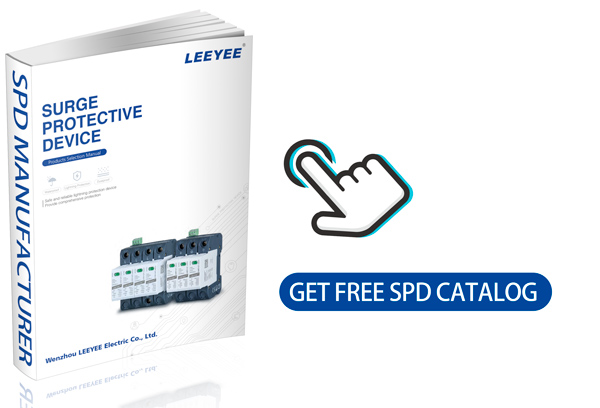Surge arrestors play a crucial role in protecting electrical systems from voltage spikes and transients. They help divert excess voltage away from sensitive equipment, preventing damage to devices. However, selecting the right fuse for a surge arrestor is equally important. A properly chosen fuse ensures effective protection and enhances the overall reliability of the electrical system. This article will guide you through the factors involved in selecting the appropriate fuse for a surge arrestor.
Inhaltsübersicht
Understanding Surge Arrestors
A surge arrestor, also known as a surge protector or surge suppressor, is designed to protect electrical devices from voltage spikes. These spikes can occur due to various reasons, including lightning strikes, power surges from the grid, or even switching operations in nearby electrical equipment.
Surge arrestors work by diverting excess voltage to the ground, thereby limiting the voltage that reaches connected devices. They contain components like metal oxide varistors (MOVs) that absorb and dissipate the surplus energy.
The Importance of Fuses
Fuses serve as protective devices that prevent excessive current from flowing through electrical circuits. When the current exceeds a certain limit, the fuse melts, breaking the circuit and stopping the flow of electricity. This action protects both the surge arrestor and the devices connected to it.
Choosing the right fuse for a surge arrestor is essential for several reasons:
- Prevention of Damage: An appropriately rated fuse protects the surge arrestor from overheating and potential failure.
- System Reliability: Proper fusing ensures that the surge arrestor functions effectively, providing reliable protection for connected equipment.
- Safety: A correctly selected fuse minimizes the risk of electrical fires and other hazards.
Factors to Consider When Selecting a Fuse
1. Current Rating
The current rating of a fuse is one of the most critical factors to consider. This rating indicates the maximum current the fuse can handle without blowing. To select the correct current rating, you need to consider the following:
- Surge Arrestor Specifications: Check the manufacturer’s specifications for the surge arrestor. They usually recommend a compatible fuse rating.
- Connected Load: Calculate the total current that the devices connected to the surge arrestor will draw. The fuse rating should be higher than this load but lower than the maximum rating of the surge arrestor.
2. Nennspannung
The voltage rating of the fuse must match or exceed the system voltage. If the voltage rating is too low, the fuse may blow under normal operating conditions, leading to unnecessary interruptions. Conversely, using a fuse with a voltage rating that is too high may not provide adequate protection.
Ensure that the fuse’s voltage rating aligns with the specifications of both the surge arrestor and the overall electrical system.
3. Time-Delay vs. Fast-Acting Fuses
Fuses come in two main types: time-delay (slow-blow) and fast-acting.
- Time-Delay Fuses: These fuses tolerate temporary surges, making them suitable for devices that may experience inrush currents, such as motors and transformers. They are less likely to blow during short spikes.
- Fast-Acting Fuses: These fuses react quickly to overcurrent situations, providing immediate protection. They are ideal for sensitive electronic equipment that cannot tolerate even brief overcurrents.
Consider the type of equipment connected to the surge arrestor when choosing between these two fuse types.
4. Umweltbedingungen
The environment where the surge arrestor and fuse will operate can impact the selection process. Factors such as temperature, humidity, and exposure to dust or chemicals can affect the performance of both the surge arrestor and the fuse.
For example, if the surge arrestor operates in a high-temperature environment, you may need a fuse rated for higher temperatures. Check the manufacturer’s guidelines to ensure compatibility with environmental conditions.
5. Standards and Certifications
Look for fuses that meet industry standards and certifications. This ensures that the fuse has undergone testing for safety and reliability. Common standards include UL (Underwriters Laboratories), IEC (International Electrotechnical Commission), and CSA (Canadian Standards Association).
Using certified fuses adds an extra layer of assurance regarding safety and performance, which is especially important in critical applications.
6. Consulting Manufacturer Guidelines
Always refer to the manufacturer’s guidelines for both the surge arrestor and the fuse. Manufacturers often provide specific recommendations for fuse ratings and types that work best with their products. Following these guidelines can help you avoid potential issues and ensure optimal performance.
Installation Tips
Once you have selected the appropriate fuse for your surge arrestor, installation becomes the next step. Here are some tips to ensure proper installation:
- Follow Wiring Diagrams: Adhere to any wiring diagrams provided by the manufacturer to ensure correct connections.
- Double-Check Ratings: Before installation, double-check that the fuse ratings match your calculations and the manufacturer’s specifications.
- Regular Maintenance: Periodically inspect the fuse and surge arrestor for signs of wear or damage. Replace fuses as needed to maintain effective protection.
Schlussfolgerung
Selecting the right fuse for a surge arrestor is crucial for ensuring the safety and reliability of your electrical system. By considering factors such as current ratings, voltage ratings, fuse types, environmental conditions, and manufacturer guidelines, you can make an informed choice. Proper fusing not only protects the surge arrestor but also safeguards your valuable electronic devices from potential damage. Investing time in this selection process will lead to a more reliable and safe electrical setup.
Über LEEYEE:
Gegründet im Jahr 2009, LEEYEE ist ein spezialisierter Hersteller von Überspannungsschutzgeräten (SPDs). Wir besitzen die Zertifikate von CE, CB, ISO9001 und TUV. Darüber hinaus unterstützen wir Anpassungsmöglichkeiten für Farbe Aussehen, Parameter und Logos. Willkommen zu konsultieren für Produktkataloge und Anfragen, können Sie uns per E-Mail kontaktieren unter devin@cnspd.com.
